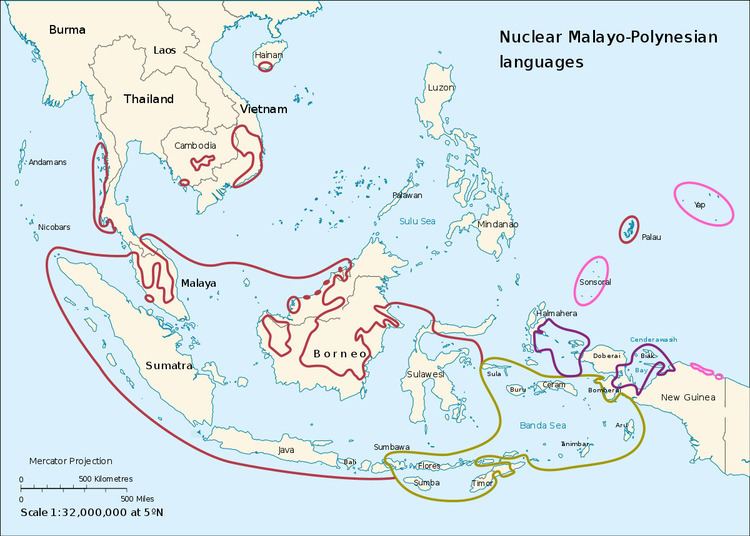Glottolog None | ||
 | ||
Geographic
distribution South East Asia and the Pacific Linguistic classification Austronesian
Paiwanic ?
Malayo-Polynesian
Nuclear Malayo-Polynesian Subdivisions Sunda–Sulawesi branches
Central–Eastern branches | ||
The Nuclear Malayo-Polynesian languages are a branch of the Austronesian family, proposed by Wouk & Ross (2002), that are thought to have dispersed from a possible homeland in Sulawesi. They are called nuclear because they are the conceptual core of the Malayo-Polynesian family, including both Malay and Polynesian. Nuclear Malayo-Polynesian is found throughout Indonesia (apart from central Borneo, Sabah, and the north of Sulawesi), and into Melanesia and the Pacific.
Nuclear Malayo-Polynesian languages are Malayo-Polynesian languages that have abandoned the Austronesian alignment inherited from Proto-Malayo-Polynesian syntax. Nuclear Malayo-Polynesian includes the traditional geographic groupings of Central Malayo-Polynesian, Eastern Malayo-Polynesian, and part of Western Malayo-Polynesian, a part Wouk and Ross call Inner Western Malayo-Polynesian or Sunda–Sulawesi. Nuclear Malayo-Polynesian excludes the Outer Western Malayo-Polynesian (Borneo–Philippine) languages.
Inner Western Malayo-Polynesian (Sunda–Sulawesi) is therefore defined negatively, as those languages of Sunda and Sulawesi not included in Central–Eastern Malayo-Polynesian. Central–Eastern is an areal group, divergent from the rest of Malayo-Polynesian due to non-Austronesian (Papuan) substrata rather than due to any genealogical relationship.
Classification
There are a number of small clusters of languages whose interrelationship remains uncertain. Grouped by geography, they are:
The position of Rejang in southwest Sumatra and newly discovered Nasal are as yet uncertain. Rejang may be a displaced Bornean Dayak language, and not Nuclear Malayo-Polynesian at all.
